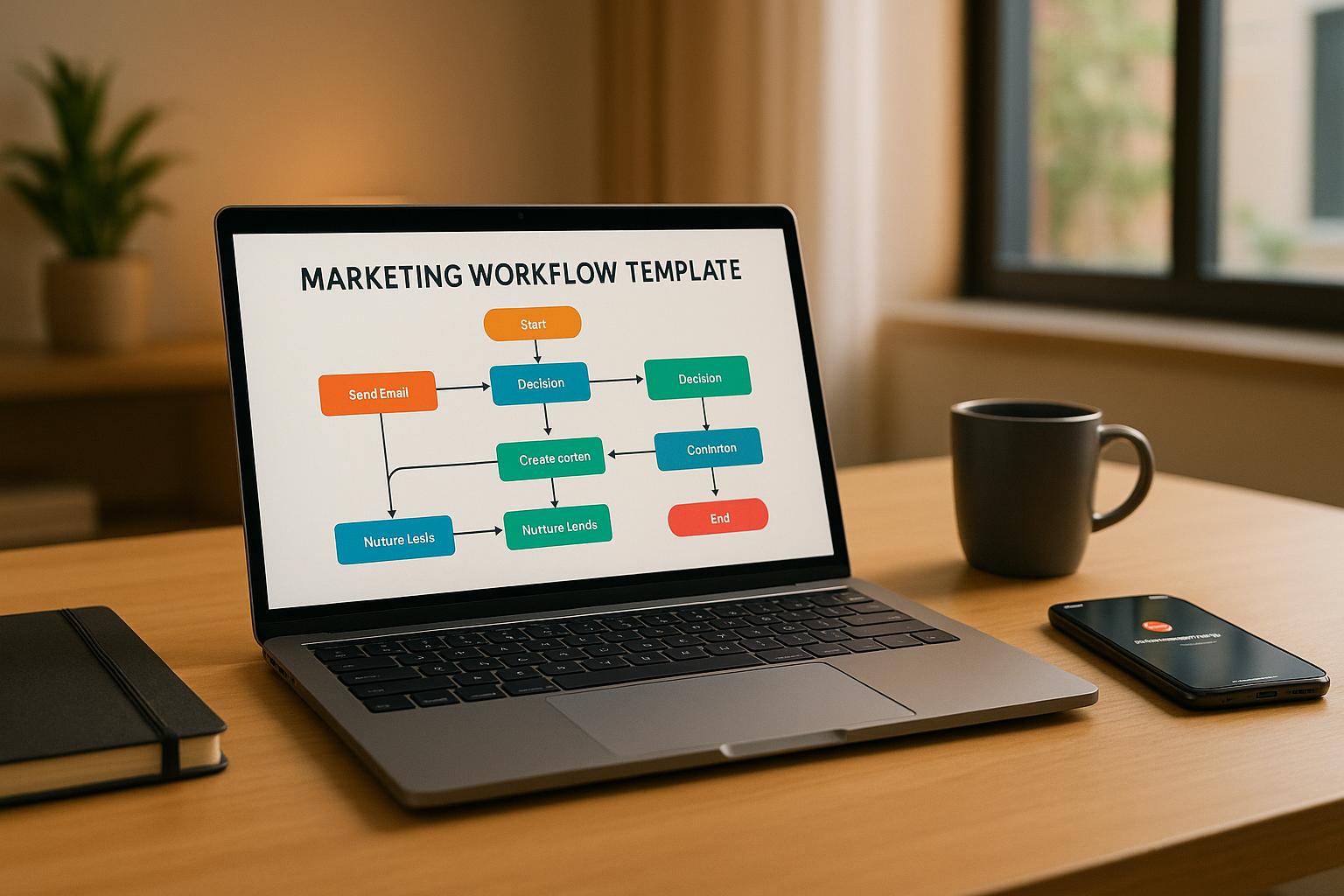Behavioral insights can transform how real estate professionals nurture leads, turning raw data into actionable strategies. Here’s why it matters:
- Boost Conversion Rates: Tracking behaviors like property views and virtual tours can increase conversions by 30–40%.
- Shorten Sales Cycles: Behavior-driven strategies can reduce the time from lead to sale by 25%.
- Personalized Engagement: Tailor follow-ups based on metrics like search patterns, email responses, and tour activity.
Key Takeaways:
- What to Track: Property views, virtual tour activity, email engagement, and search preferences.
- How to Act: Use AI tools and CRM systems to prioritize leads, send timely updates, and personalize communication.
- Results: 47% higher lead conversion rates, 35% better email open rates, and faster deal closures.
Behavioral data isn’t just numbers; it’s a roadmap to understanding your clients and closing deals faster.
Behavioral Tracking Basics
Defining Behavioral Tracking
Behavioral tracking is all about understanding how clients interact with your digital platforms. By monitoring activities like property searches, listing views, virtual tour usage, and responses to marketing efforts, you can gather valuable insights. These systems pull data from various touchpoints, such as:
- Property listing views and actions
- Time spent on virtual tours
- Responses to email campaigns
- Website navigation patterns
- Search preferences and filters
- Social media interactions
This data helps paint a clearer picture of client interests and behaviors.
Essential Real Estate Metrics
To truly grasp lead behavior, focus on metrics that reveal engagement levels and intent. These indicators can predict which leads are most likely to turn into clients.
| Metric Category | Key Indicators | What It Tells You |
|---|---|---|
| Property Engagement | View duration, return visits, saved listings | Gauges interest in specific properties |
| Communication Response | Email open rates, click-throughs, response times | Measures how responsive and engaged leads are |
| Search Behavior | Search frequency, filter use, price ranges | Highlights buyer preferences and priorities |
| Virtual Tour Activity | Time spent, rooms explored, interaction points | Suggests serious buying intent |
By analyzing these metrics, you can uncover patterns that signal when a lead is ready to take the next step.
Reading Online Behavior Patterns
Understanding online behavior is key to determining a lead’s readiness to move forward.
"At Growth-Realty, we bridge the gap between your business and its ideal audience, ensuring your message reaches them when it matters most."
Certain behavior patterns stand out as strong indicators of high intent, including:
- Frequent Searches: An uptick in property searches in specific locations or price ranges.
- Engagement with Virtual Tours: Spending more time exploring properties through 360° tours.
- Repeated Visits: Returning to the same property listings multiple times.
- Direct Inquiries: Asking specific questions about property details, availability, or scheduling viewings.
For example, a major real estate platform saw its organic traffic triple within two months by leveraging data-driven insights and advanced tracking techniques. This shows the power of understanding and acting on behavioral data.
Using Behavioral Data for Lead Nurturing
Lead Group Classification
Organizing leads based on their online behavior helps create more personalized and effective follow-up strategies. Here’s a breakdown of common lead categories and how to nurture them:
| Lead Category | Behavioral Indicators | Nurturing Focus |
|---|---|---|
| First-Time Buyers | Frequent basic property searches, usage of price filters, visits to mortgage calculators | Share educational content and first-time buyer guides. |
| Luxury Market | Views of high-end properties, extended virtual tour sessions, multiple saved listings | Send premium property alerts and offer exclusive viewings. |
| Investors | Multiple property comparisons, use of ROI calculators, research on rental markets | Provide investment opportunities and detailed market analysis. |
| Ready-to-Buy | Repeated visits to specific listings, direct inquiries, high engagement with virtual tours | Follow up immediately and schedule property viewings. |
These segments allow for tailored engagement, setting the stage for more precise communication methods.
Targeted Response Strategies
Once you’ve grouped your leads, the next step is crafting responses that align with their behavior. AI tools can help pinpoint key moments for engagement, such as:
- Repeated Virtual Tour Views: If a lead keeps revisiting a property’s virtual tour, consider sharing additional details or offering to schedule an in-person or live virtual viewing.
- Shifts in Search Patterns: When search criteria change, it often indicates evolving preferences. Use this opportunity to suggest properties that match their updated interests.
- High Engagement Periods: Leads with heightened activity – like frequent searches or inquiries – are prime for timely updates and personalized recommendations.
Smart Property Matching
Taking it further, AI-driven tools can analyze a lead’s engagement history to recommend properties that truly align with their interests. This process takes into account:
- Past property views
- Search filters applied
- Interaction with virtual tours
- Exploration of specific price ranges
The system continuously learns from each interaction, fine-tuning its recommendations to better match what the lead is actively seeking. This ensures that every property suggestion feels relevant and aligned with their preferences.
Connecting Behavioral Data with Real Estate Systems
CRM Behavior Tracking
CRM systems are the backbone of organizing lead interactions. When behavioral tracking features are integrated, real estate professionals can gain a deeper understanding of how leads engage throughout their journey.
Here are some key elements of CRM behavior tracking:
| Tracking Component | Purpose | Automated Actions |
|---|---|---|
| Property View History | Monitor listings viewed | Send alerts for similar properties |
| Search Pattern Analysis | Track changes in preferences | Update lead profiles automatically |
| Engagement Timing | Identify peak contact times | Schedule follow-ups accordingly |
| Communication Response | Measure message engagement | Adjust follow-up frequency |
For instance, our CRM solution includes features like 3D virtual tours. High-intent behaviors, such as multiple virtual tour views or repeated searches, are flagged automatically. This allows agents to respond quickly and effectively. These insights are then fed into lead scoring systems, helping prioritize prospects with the highest potential.
Lead Scoring Systems
Your CRM data isn’t just for storage – it’s the foundation for creating automated lead scoring systems. These systems take behavioral data and turn it into actionable insights, helping sales teams focus on leads most likely to convert.
A solid lead scoring framework often evaluates:
- Engagement Depth: Tracks actions like completing virtual tours, time spent on property details, return visits, and even mortgage calculator usage.
- Activity Frequency: Monitors patterns like daily versus weekly property views, response rates to communications, direct contact attempts, and search refinements.
- Conversion Signals: Flags key actions such as document downloads, property viewing requests, mortgage calculations, and information inquiries.
sbb-itb-2f9da9d
Tracking Results and Performance
Performance Metrics
To truly measure the success of behavior-based nurturing, tracking the right metrics is key. Studies show that leads nurtured with personalized, behavior-driven strategies are up to 47% more likely to convert compared to those approached with generic outreach.
Here are some critical metrics to keep an eye on:
| Metric Category | Key Indicators | Observed Impact |
|---|---|---|
| Conversion Rate | Percentage of leads turning into clients | Up to 47% improvement |
| Engagement | Email opens and click-through rates | Personalized content boosts open rates by 35% |
| Sales Cycle Length | Time from first contact to conversion | 25% shorter sales cycles |
For example, leads who participate in virtual tours are 30% more likely to schedule an in-person viewing. This kind of insight allows you to focus your follow-up efforts where they’ll have the greatest impact, ensuring resources are allocated efficiently. By analyzing these metrics, you can fine-tune your approach and achieve even better results.
Testing and Improving Campaigns
One of the most effective ways to improve your campaigns is through A/B testing. By experimenting with different approaches and analyzing their performance, you can make data-driven decisions to enhance your lead nurturing strategies.
A/B testing might include sending variations of emails, property recommendations, or follow-up sequences to different audience segments. To make the most of your testing efforts, keep these tips in mind:
- Define clear success metrics before starting.
- Run tests long enough to collect reliable data.
- Use consistent control groups for comparison.
- Document all changes and results for future analysis.
The insights gained from A/B testing feed directly into advanced analytics, enabling ongoing refinement of your campaigns.
In fact, a 2025 report by ContempoThemes highlights that agencies using detailed behavioral tracking and segmentation have achieved a 25% reduction in sales cycle length. Additionally, personalized emails with tailored property recommendations are 35% more likely to be opened than generic listings.
Advanced Analytics Integration
Modern CRM systems offer powerful analytics tools that make it easier to refine your strategy. These systems can:
- Predict the best times to reach out based on past engagement.
- Spot trends in property viewing behavior.
- Track interactions across multiple channels.
- Generate automated reports on performance.
At Growth-Realty, we rely on these advanced analytics tools to continually optimize our lead nurturing efforts. By leveraging these insights, we’re able to drive better results and improve overall efficiency.
A Supercharged Lead Nurturing Strategy
Conclusion
Behavioral insights have reshaped lead nurturing in real estate by introducing data-driven, tailored strategies that directly improve conversion rates. Combining behavioral tracking with CRM systems has given real estate professionals a deeper understanding of their prospects, allowing them to address needs more effectively throughout the buyer’s journey.
- Higher Conversion Rates: Tracking property views has been shown to increase conversion rates by 30–40%, as agents can reach out at the right moment when prospects revisit listings repeatedly.
- Stronger Engagement: Personalized emails have proven to increase open rates by 25%, making communication more impactful.
- Streamlined Sales Process: Real-time responses based on prospect behavior allow agents to follow up more efficiently, speeding up the entire sales cycle.
With these successes as a foundation, advancements like AI-driven predictive analytics and cross-platform behavioral tracking promise to elevate lead nurturing even further. By blending cutting-edge technology with genuine client care, the future of real estate lead management looks incredibly promising.
FAQs
How can real estate professionals use behavioral insights to improve lead nurturing strategies?
Real estate professionals can use behavioral tracking data to gain deeper insights into what their leads want, how they interact, and where their interests lie. By analyzing details like website visits, email engagement, and property search activity, you can fine-tune your communication to align with each lead’s specific preferences.
For instance, if a lead consistently browses homes in a particular neighborhood or within a certain price range, you can send them targeted recommendations or updates about market trends in that area. Similarly, monitoring engagement with emails or virtual tours can reveal when a lead might be ready to take the next step, giving you the perfect opportunity to reach out.
Tools like AI-powered CRMs and marketing platforms – such as the ones provided by Growth-Realty – make this process easier. They automate data gathering and offer actionable insights, helping you nurture leads with precision and efficiency.
What AI tools or CRM features can help improve lead engagement using behavioral data?
AI tools and CRM features that tap into behavioral data can play a big role in boosting lead engagement by making interactions more personal and communication more efficient. For instance, AI-driven analytics can monitor actions like website visits, property views, or email clicks to uncover patterns and preferences. This information allows businesses to craft follow-ups or recommendations that feel relevant and tailored to each potential buyer.
Modern CRM systems often come equipped with features like automated lead scoring, which evaluates and ranks leads based on their activity and likelihood to convert, and smart segmentation, which organizes leads by their behaviors or interests. On top of that, AI chatbots can step in to answer questions instantly, ensuring no lead is left waiting for a response. Together, these tools create a smooth, personalized experience that keeps leads engaged and moving forward in their journey.
How does categorizing leads, like ‘First-Time Buyers’ or ‘Investors,’ help create more personalized follow-up strategies?
Segmenting your leads into distinct categories lets you craft messages and outreach strategies that align with their specific needs and interests. For instance, first-time buyers might find value in educational content about navigating the home-buying process. On the other hand, investors are likely to appreciate data-focused materials, like ROI projections or market trend analyses.
When you understand what matters most to each group, you can provide content that resonates with them at just the right moment. This personalized approach not only strengthens engagement but also builds trust, making it easier to turn leads into happy, long-term clients.



